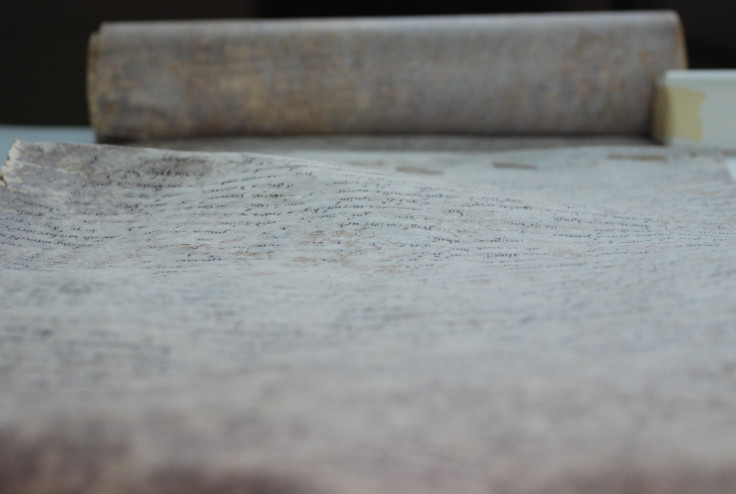Mystery of the peculiar purple spots on 770-year-old Secret Vatican Archive scroll solved
A microbial war waged on the document's surface left purple stains from the loser.

Strange purple spots appearing on a 13th century scroll have been puzzling scientists for more than 40 years. It now appears that a slow microbial war being carried out on the surface of the scroll left the stains behind.
Microbial analysis of the scroll stumped biologists in 1976, when the purple spots couldn't be grown on other parchments. Even recent tests in 2016 using DNA sequencing and fingerprinting failed to identify the cause of the purple spots.
The document, made of goat's skin, is a considerable 5 metres long. With the catchy name of A.A. Arm. I-XVIII 3328, the text was written in the year 1244 AD. It tells the story of a young soldier named Laurentius Loricatus, who accidentally killed someone. The scroll details his punishment: retirement to a cave near Subiaco in Italy, where he remained for 34 years, self-flagellating and "wearing instruments of penance".
The scroll was moved to the Vatican's Secret Archive in the 18th century, but not before the peculiar purple spots began to appear on it. They have been getting worse and worse, seriously threatening the legibility of the document and damaging the collagen of the goat's skin parchment.
Now researchers think they have solved the mystery of the purple spots, by mapping which microbes live where on the parchment. The findings are published in a study in the journal Scientific Reports.
In the purple spots, the bacteria Gammaproteobacteria, usually found in the sea, was found. Outside the purple spots these bacteria were almost entirely absent.
The scientists suppose that a vicious bacterial war has been waged on the scroll, with Gammaproteobacteria replacing another type of bacteria called Halobacteria. These bacteria produce pigmented rhodopsin molecules. In this succession process, nothing but a purple smear of Halobacteria rhodopsin was left behind.
"The new information on the colonisation and deterioration processes, including the kind of damage to the collagen fibres and the chemical composition of the purple spots, open new perspectives to the restoration and conservation of ancient damaged parchments," the authors, led by Luciana Migliore of Tor Vergata University in Rome, conclude in the study.
"A better understanding of the possible role of Halobacteria could be useful, as they can survive for huge times, being a possible "time bomb" in the ancient undamaged parchments."


© Copyright IBTimes 2025. All rights reserved.






















